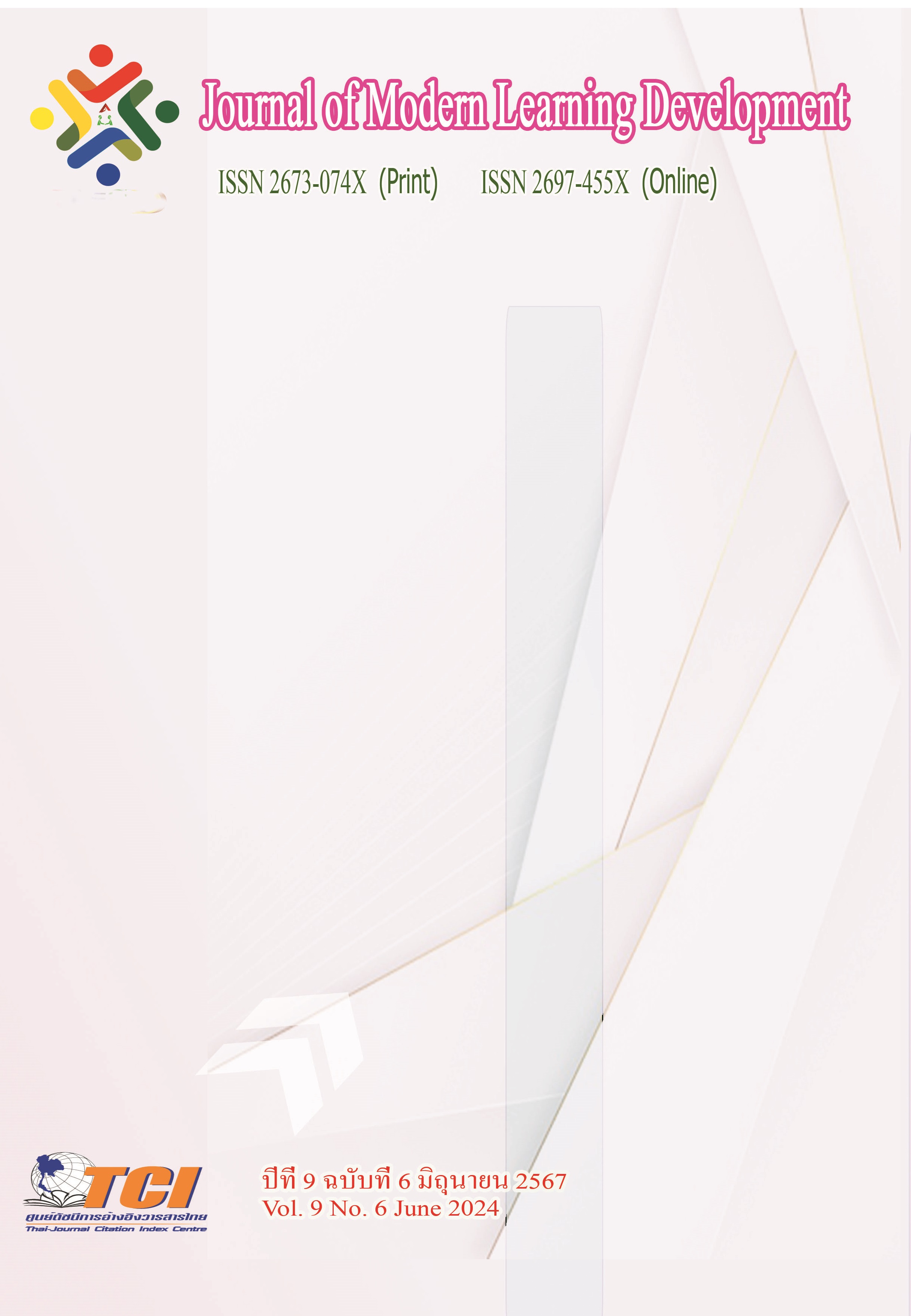Application Guidelines Enterprise Resource Planning (ERP) to Optimize the Raw Material Receiving Process in Warehouse a Case Study of a Healthy Footwear Factory.
Main Article Content
Abstract
This research is for research to study problems and research on various components. Organizational resources for researching raw materials in research laboratories, health information factories. The main informants are factory manager Deputy Factory Manager Head of Production Planning Department Warehouse head, raw material receiving section Operations personnel related to receiving raw materials, people 1, 2, and 3. It is a qualitative research using in-depth interviews (In-Depth Interviews), analyzing issues using reason maps and applying the enterprise resource planning (ERP) system. The results of the research found that the problem with the raw material intake process is that there is no good management system, record keeping, and data collection. It is a form of recording in a notebook which is difficult to check and follow up on. The work is not efficient enough. Resulting in work being delayed. and damage occurred in the process of receiving raw materials. There were a total of 3 activities that occurred in the original raw material receiving process, using a total of 7 employees, and from collecting data on the actual operations of employees 10 times, resulting in an average operating time of 45.85 minutes. And from the application, it was found that the process of receiving raw materials into the raw material warehouse area was new compared to the old one. It is more detailed. Work processes can be inspected, requiring less staff and time to perform work. Using a total of 5 work steps, using a total of 4 employees, 3 fewer than the original model, took an average of 28.73 minutes to complete the job, 17.12 minutes less than the original model.
Article Details
References
ขวัญดาว สวนแสน และอรรถกร เก่งพล. (2559). การพัฒนาระบบฐานข้อมูลสำหรับกระบวนการตรวจรับและการควบคุมกระบวนการสอบกลับของวัตถุดิบขาเข้า กรณีศึกษา: โรงงานผลิตชิ้นส่วนอากาศยาน. วารสารวิชาการพระจอมเกล้าพระนครเหนือ. 26 (2), 197 – 208.
นรินทร์ ตันไพบูลย์. (2564). แนวโน้มธุรกิจ/อุตสาหกรรมปี 2564-2566: ธุรกิจร้านค้าปลีกสมัยใหม่. ออนไลน์.สืบค้นเมื่อ 11 ตุลาคม 2566 แหล่งที่มา: krungsri.com/th/research/industry/industry-outlook/wholesale-retail/modern-trade/io/io-modern-trade-21
นิชดา ศิริพันธ และมณิสรา บารมีชัย. (2564). การเพิ่มประสิทธิภาพการบริหารจัดการคลังสินค้าวัตถุดิบคงคลังและกระบวนการผลิต. การประชุมนำเสนอผลงานวิจัยบัณฑิตศึกษาระดับชาติ: มหาวิทยาลัยรังสิต. ครั้งที่ 16. 632-640.
สมาคมการพิมพ์ไทย. (2565). ความเข้าใจพื้นฐานเกี่ยวกับการควบคุมสินค้าคงคลัง. ออนไลน์. สืบค้นเมื่อ 4 สิงหาคม 2566. แหล่งที่มา: thaiprint.org/2022/10/vol138/knowledge138-02/
สำนักงานคณะกรรมการพัฒนาการเศรษฐกิจและสังคมแห่งชาติ. (2556). แผนยุทธศาสตร์การพัฒนาระบบ
โลจิสติกส์ของไทยฉบับที่2 (2556-2560). ออนไลน์. สืบค้นเมื่อ 2 กันยายน 2566. แหล่งที่มา https://www.nesdc.go.th/download/document/logistic/plan2.pdf
โอฬาร กิตติธีรพรชัย และนระเกณฑ์พุ่มชูศรี. (2556). ระบบการจัดการคลังสินค้า. วารสารวิศวกรรมศาสตร์. 5 (2), 49-62.
De Oliveira, A. V., Pimentel, C. M. O., Godina, R., Matias, J. C. D. O., & Garrido, S. M. P. (2022). Improvement of the Logistics Flows in the Receiving Process of a Warehouse. Logistics. 6 (1), 1-23.
Putra, D. G., Rahayu, R., & Putri, A. (2021). The influence of Enterprise Resource Planning (ERP) implementation system on company performance mediated by organizational capabilities. Journal of Accounting and Investment. 22 (2), 221-241.
Handfield, R., & Finkenstadt, D. J. (2023). Supply Chain Immunity: Overcoming our Nation’s Sourcing Sickness in a Post-COVID World. Springer Nature. 1-8
Paksoy, T., Kochan, C. G., & Ali, S. S. (Eds.). (2020). Logistics 4.0: Digital transformation of supply chain management. CRC Press. 178-180

